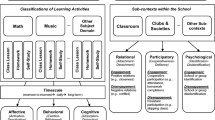Abstract
Independent studies are designed to enable advanced students to investigate a specific topic of interest in greater depth than is possible in a traditional classroom environment. Student and faculty advisor must work together to provide direction for the independent study and to insure its success. This paper explores the role of both students and faculty advisors in developing independent studies. In addition, how to plan for independent studies and a step-by-step guide for directing them is proposed.
Similar content being viewed by others
References
Friedman, P.G. (1986). Independent study, fieldwork, and peer teaching. In P.G. Friedman & R.C. Jenkins-Friedman (Eds.),Fostering academic excellence through honors programs (pp. 87–98). San Francisco: Jossey-Bass.
Lamden, L., & Worby, D. (1976). Across the desk: Teaching through independent study.Alternative Higher Education, 1, 61–67.
Zemke, R. (1982). Self-directed learning: A must skill in the information age.Training, 19, 28–32.
Author information
Authors and Affiliations
Additional information
She is currently completing a dissertation and plans to remain in the field of higher education.
Rights and permissions
About this article
Cite this article
Weber, D.R. Independent study: Direction is the key to success. Innov High Educ 13, 85–89 (1989). https://doi.org/10.1007/BF00889742
Issue Date:
DOI: https://doi.org/10.1007/BF00889742




